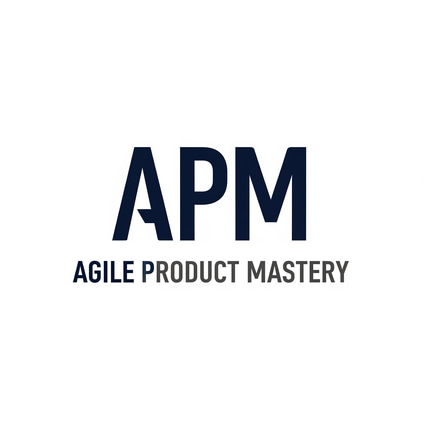Project Management to Product: Your Essential Transition Playbook
Transition from Project Management to a Product role seamlessly. Discover the key shifts, essential skills needed, and strategic steps for a successful career pivot.
AGILE PRODUCT MANAGEMENTCAREER PIVOTPROJECT TO PRODUCT
Written by: Matt Gregory - Founder Agile Product Mastery
6/8/20254 min read


Introduction: Why Project Managers Are Perfectly Positioned for Product Roles
If you’re a Project Manager, you're probably aware of the shift from Waterfall to Agile and the rise of Agile and product in workplaces around the world. Every organisation is putting their spin on Agile and in the new product world, is there a role for the project manager not to mind the agile project manager?
It's a question many have been asking.
So if your a seasoned project manager eyeing the world of Product Management, you’re not alone. The shift from project to product is one of the most powerful—and strategic—career pivots you can make in today's digital world.
The best part? You already bring a treasure trove of transferable skills: stakeholder management, delivery focus, risk awareness, and communication under pressure.
But here’s the catch: product roles operate on a fundamentally different mindset. To thrive, you’ll need to shift from delivering projects on time and on budget to delivering ongoing customer and business value through evolving products.
This guide is your playbook for making that leap with confidence.
Key Mindset Shift: From Fixed Outputs to Evolving Outcomes
In Project Management, success looks like:
The project is delivered on time, within scope, and within budget.
In Product Management, success is:
We continuously solve real customer problems and create business value.
This is the core pivot: Projects end; Products evolve.
As a Product Manager (or Owner), you’re not just managing timelines and resources—you’re defining why the product exists, what problems it solves, and how to drive measurable impact over time. You own the what and why, not just the when.
Skill Transfer: What You Already Have in Your Toolkit
Before we dive into new skills, we have to acknowledge the strengths you’re bringing:
Stakeholder Management
You’ve worked with sponsors, execs, SMEs, and cross-functional teams. This is gold in product—where buy-in is everything.
Prioritization & Trade-Offs
You’ve juggled scope, budget, and time. Now you’ll balance user needs, tech feasibility, and business value.
Delivery Rhythm
You understand how work gets done. You’ve navigated Agile ceremonies or waterfall plans. This gives you credibility with engineering and delivery teams.
Risk & Communication
You can smell project risk a mile away and communicate clearly with leaders. These instincts serve you well in managing product bets and roadmap alignment.
In short: you’re 60% there. The rest is learning the product mindset and techniques.
Key Skill Gaps to Bridge for Product Roles
To truly land and thrive in a product role, focus on building these core areas:
1. Customer Empathy & Discovery
Learn how to conduct customer interviews, run discovery sprints, and validate ideas through experimentation.
Read up on Jobs To Be Done, personas, and user journeys.
2. Product Strategy & Roadmapping
Shift from task delivery to crafting a vision, goals, and roadmap aligned to outcomes (not just feature lists).
Master North Star Metrics, OKRs, and outcome-based planning.
3. Backlog & Story Crafting
Get fluent in writing user stories, acceptance criteria, and slicing work based on value, not effort.
Understand how to balance tech debt, bugs, experiments, and features in your backlog.
4. Market & Competitor Awareness
Learn to analyze market dynamics, conduct competitor research, and define unique value propositions.
5. Product Lifecycle Thinking
Projects often have a start and finish.
Products have lifecycles: introduction, growth, maturity, and sunset.
Strategic Steps to Make the Transition
When I made the move from project to product these are the steps I took, which you can easily do too:
Step 1: Clarify Your Target Role
Decide whether you’re aiming for:
Product Manager – Own product strategy, user needs, and roadmap.
Product Owner – Tactical delivery focus, often embedded in Scrum teams.
Associate PM – Great starting point if you’re new to tech/product.
Research job descriptions. Compare your current responsibilities with desired product roles. Identify gaps.
Step 2: Start Where You Are
You don’t have to quit your job to become product-focused.
Ask to shadow or collaborate with a Product Owner or Product Manager.
Volunteer to co-create a roadmap, help with backlog refinement, or lead a discovery workshop.
Convert a project into a continuous product initiative, if you have influence.
You can build product skills in place before formally pivoting.
Step 3: Build Product Artifacts
Start creating the deliverables that PMs are expected to own:
Product vision statements
Opportunity canvases
Customer journey maps
Roadmaps and OKRs
User stories and prioritization matrices
Even side projects or hypothetical cases are great for your portfolio.
Step 4: Upskill with Intention
You don’t need another degree, but focused learning helps.
Recommended Books:
Inspired by Marty Cagan
Escaping the Build Trap by Melissa Perri
Lean Product and Lean Analytics by Ben Yoskovitz & Alistair Croll
Certifications (optional):
CSPO (Certified Scrum Product Owner)
Pragmatic Institute
Product School
Free resources: Podcasts like Product Thinking, YouTube channels like Product Alliance, and newsletters like Lenny’s Newsletter.
Step 5: Reframe Your Resume & Pitch
You must reposition your experience in product language:
Instead of:
Led project to deliver mobile app within 3-month timeline.
Say:
Defined MVP scope and delivery roadmap for mobile app used by 40K customers; collaborated with design and dev teams to prioritize key customer features.
Use terms like:
Customer value
Product lifecycle
Hypothesis-driven development
Iterative delivery
Outcome-focused
Craft a narrative around your product instincts, not just execution ability.
Step 6: Find a Sponsor or Product Mentor
Your best accelerant is someone already in product who can:
Provide feedback on your artifacts and mindset
Introduce you to hiring managers
Recommend you for internal moves
Product people love to help curious, proactive learners. Just ask.
Overcoming Common Fears
"I don’t have a tech background."
That’s okay. Many great PMs don’t. Focus on user problems, business value, and learning the language of engineers—not writing code.
"What if I fail?"
Product roles are messy by nature. You’re constantly testing, learning, and adjusting. Failure is part of the job. You already know how to manage ambiguity from project firefighting.
"I’m too senior to start over."
You’re not starting over—you’re pivoting. The leadership, foresight, and delivery muscle you bring is a massive advantage.
Final Thoughts: You’re Closer Than You Think
When I transitioned from Project Management to Product I thought it owuld be a huge leap, but it’s a natural evolution for project managers like you. You’ve already mastered execution, stakeholder communication, and decision-making under pressure. Now, it’s time to layer on customer-centric thinking, product strategy, and agile experimentation. With the right mindset and a bit of focused practice, you’ll become not just a Product Manager—but a strategic product leader who delivers real impact.
Welcome to the product game. It’s where your business sense and delivery skill finally converge—and where you’ll thrive.
If you want to learn more, or stay in touch, join our community here
© Agile Product Mastery — Build a career that scales. Not one that burns out.
Powered by Baltimore Advisory Pty Ltd — ABN 97 678 312 475 — All rights reserved
Follow us on LinkedIn
